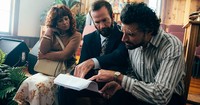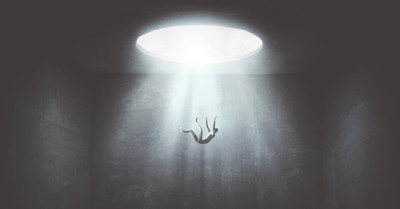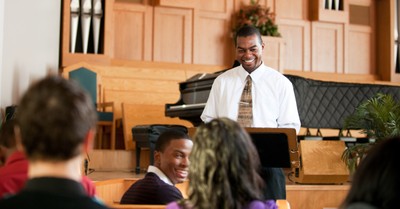"The Sound of Music" - Still Alive After 40 Years
- Annabelle Robertson Entertainment Critic
- Published Nov 14, 2005

Release Date: November 15, 2005
Genre: Family
Run Time: 174 min.
Producer/Distributor: Twentieth Century Fox
It’s been four decades since its release, but the hills around the world are still very much alive with “The Sound of Music.”
“Everywhere I go, people insist on telling me stories from their childhood, and what the musical has meant to them,” says Julie Andrews, in the introduction to this 40th anniversary DVD re-release. And surely, she is right. For who doesn’t have very fond memories of this delightful musical?
Andrews, as you will recall, plays the spunky Maria – a would-be nun who is sent to the prestigious Von Trapp home as a governess, where she supervises seven orphaned children and eventually comes to love their widowed father, Captain Von Trapp (Christopher Plummer). Along the way, Maria helps the family heal by teaching them the joy of music – to the tune of many Rogers & Hammerstein hits, including “My Favorite Things,” “Sixteen Going on Seventeen” and of course, the title song, “The Sound of Music.”
As with most DVDs, the attraction of this re-release is its “extras.” The first disc (of two) contains a lengthy commentary by Andrews, another by Robert Wise, the director, and a third version narrated by both Andrews and Plummer. The original footage to the film has been carefully restored, frame by frame, and is now of top-notch quality, with bright colors and clarity that give the Austrian Alps a beautiful, distinctive crispness. Viewers will also enjoy a sing-along version on this disc, which includes subtitles in English, French and Spanish.
The second disc is even more interesting, with several features produced exclusively for the new release. The first is a 63-minute interview with Andrews, who talks about the original Von Trapp family (including the indomitable Maria Von Trapp); the Broadway musical that spawned the film; and a wide variety of anecdotes about Andrew’s experiences with Wise, Plummer and the young actors who played the Von Trapp children. Another feature is a fireside chat between Andrews and Plummer, although this is shorter and somewhat less interesting than the memories Andrews shares. Still another is a short documentary about the sing-along version of the show, which has toured all over the world.
I especially enjoyed the all-new “On Location” featurette, hosted by Charmian Carr, who plays the sixteen-going-on-seventeen Liesl. After seeing all the sites of Salzburg, Austria, where the film’s exteriors were shot, I was ready to pack my bags and fly across the Atlantic. I also enjoyed the reunion of the seven Von Trapp “children,” who were brought together for the first time in 20 years. They reminisced about bloopers and their childish fears on the set – of Plummer, for the most part, who apparently did not like children and who remained largely aloof from the kids (supposedly so that performances would accurately reflect the storyline). The 50- and 60-something adults laughed about all the pranks they played during filming – like swapping out the breakfast menus of the hotel guests where they were staying, night after night, and throwing acorns at cars, which happened during the scene where Captain Von Trapp, his agent and his baroness-girlfriend drive by the child-filled trees near his estate.
Perhaps the most interesting feature of this re-release, however, is the A&E Biography about the original Von Trapp family. Although the differences between Hollywood and real life are not tremendous, they are certainly significant enough to create an interesting documentary. Maria Von Trapp, for example, had a very unhappy childhood, with a father who abandoned her after her mother’s death. Perhaps then, this is why Maria struggled with her temper for the rest of her life. According to the documentary, she was prone to tantrums and often took out her anger on her husband – who she reportedly married not out of love, but out of intense devotion to the children, after her Mother Superior told her it was “God’s will.”
The couple, who had three more children together, were also married for more than a decade before fleeing Austria. And they did not walk over the Alps, as they do in the film. Had they done so, they would have ended up smack in the middle of Hitler’s summer retreat! Instead, the Von Trapps merely took a train to Italy, eventually making their way to the U.S.
Also, although the family was extremely wealthy when Maria came to live with them, they soon lost their entire fortune when the Austrian banking system collapsed. Maria took in boarders to make ends meet – among other odd jobs that she and the children performed because Captain Von Trapp, ever the aristocrat, felt that it was beneath him to work. The most significant difference in the story, however, is how the children learned to sing.
Although Maria encouraged and initially taught them, it wasn’t until a musically-gifted priest came to live with the family that they learned to sing on key. The Trapp Family Choir, as they originally called themselves, went on to won first prize in a local contest and tour around Europe. This income was lost, however, when they moved to the U.S. Fortunately, an astute agent, who made them change their name to the Trapp Family Singers, was finally able to book them, which allowed them to continue their musical legacy in this country, from their home in Vermont.
The saddest part of the story is the fact that in the haste to sell her story (contained in her autobiography), Maria Von Trap neglected to consult with an attorney. She sold the rights to the saga for a mere $9,000 – without any royalties whatsoever. Thus, while “The Sound of Music” has become one of the most thriving films and musicals of all time, the Von Trapps have not benefited at all from the success.
The most wonderful thing about “The Sound of Music” is not just the quality of the film – which includes the acting, the singing, the script and the cinematography – but the fact that it is a film for all ages and all generations. This is something that we rarely see today, and the pleasure, whether secret or shared, of singing along with the film is one that many will enjoy again with this re-release.
I must make one caveat, however small. Rogers & Hammerstein were a powerful duo who ignited the stage with fabulous musicals that endure to this day, including “Oklahoma!” and “South Pacific,” to name just two. And their lyrics and music are always great fun to sing. But, like those tunes from the '70s and '80s that I occasionally find myself mouthing, some of the lyrics had a way of surprising me this time around.
“Nothing comes from nothing,” breathes Andrews, in her love scene with Plummer. “Nothing ever will.” Whoa! Didn’t God create the world ex nihilo (from nothing)? And doesn’t He spend His days resurrecting good from nothing for us? “So somewhere in my youth or childhood, I must have done something good,” Andrews continues. This line, repeated again and again throughout the song, implies that blessing is self-created and comes from us, by doing good – rather than from above, from the Father of Heavenly Lights. What a lie! And one that I so often sang, without realizing what I was saying.
This caution is minimal, to be sure, but it’s worth noting that even in the midst of such a wonderfully nostalgic and family-friendly work of art, we still find false teaching – as well as some that is simply misguided, like Maria’s catchy, “I have confidence in confidence alone!” Is the DVD re-release nevertheless worth owning? Absolutely! I wouldn’t miss it for the world, and nor should you. But as always, be sure to look for – and talk about – these things, even as you enjoy the enduring legacy of this delightful film.




















